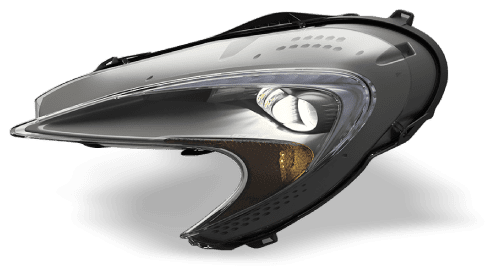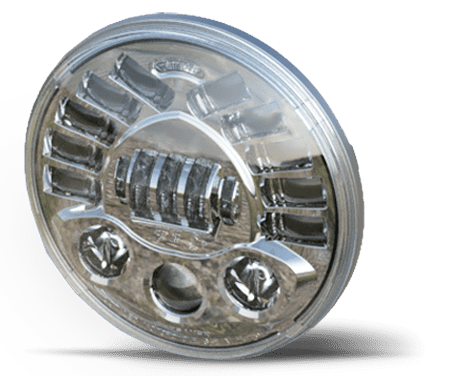
Understanding How Optics Impact LED Lighting

LED lighting continues to transform modern illumination with its energy efficiency, durability, and impressive light output. However, one aspect of LED performance that is easy to overlook is the role of optics. While many focus on lumen output or energy savings, the expertise involved in LED optics significantly shapes the way light behaves, ultimately determining the success of the application. We must examine how optics play a role in shaping light to truly understand the power and potential of LED lighting.
Dive into our comprehensive guide to start understanding how optics impact LED lighting.
The Role of Optics in Shaping Light
Optics are essential to LED lighting systems because they interact with raw light the LED chip emits, guiding, modifying, and enhancing it to serve specific purposes. Without well-designed optics, an LED illuminates indiscriminately, scattering unfocused light that lacks direction or purpose. Optics function as the architects of light, refining its distribution, intensity, and directionality.
These components alter how light interacts with its environment by determining its path and spread. Optics provide the precision required for these scenarios, whether illuminating narrow hallways, creating spotlight-focused displays, or diffusing light evenly across a workspace. Properly optimized optics maximize LED efficiency by ensuring they deliver light where users need it most, thereby eliminating waste and improving overall performance.
Types of Optical Components in LEDs
LED lighting relies on a diverse range of optical components, each contributing to specific performance characteristics. Reflectors and lenses are two of the most used elements. Reflectors control the direction of light by bouncing it off internal surfaces, focusing it toward the intended area. These are highly effective in applications requiring concentrated, high-intensity light, such as spotlights on cars or trucks.
Lenses, on the other hand, physically refract light as it passes through its material, altering its angle and spread.
These elements offer an unparalleled level of customization, from simple convex lenses that focus light into tight beams to complex multi-faceted designs for diffused lighting. Other optical components, such as diffusers and collimators, further enhance control over light distribution, ensuring that lighting performance aligns precisely with user needs.
Impact on Beam Angle and Light Distribution

One defining feature of LED optics is their ability to determine beam angle and light distribution. The beam angle specifies how narrowly or widely the optics spread light.
A narrow beam angle directs light tightly for task lighting or retail displays, emphasizing specific areas or objects. Conversely, a wide beam angle is ideal for illuminating large spaces, such as conference rooms or outdoor stadiums. You can achieve this level of lighting by installing LED lights into ceilings.
The automotive sector has many applications for different beam angles and light distribution goals. For example, vehicles can have work lights installed for a focused beam, while light bars spread LED beams across a wider area. J.W. Speaker’s LED vehicle lighting includes headlights, work lights, light bars, fog lights, and many more options due to the flexibility of LEDs in the automotive industry.
Optics precisely influence light distribution patterns, tailoring them to fit unique applications, so understanding how your LEDs function inside and out is critical, whether they’re in streetlights or commercial trucks. Every decision made regarding beam angle and distribution is an opportunity to optimize the lighting system’s energy efficiency and effectiveness.
Enhancing Light Quality and Efficiency
Optics play an indispensable role in improving LED lighting quality by refining light distribution. High-quality optics eliminate harsh glare, uneven brightness, and unwanted shadows.
Enhancing light quality and efficiency ensures that the resulting light is comfortable for users. After all, your LED optics will help you see objects near to you and far away, depending on the configuration, and you deserve those experiences without excessive eyestrain.
Efficiency is another area where optics shine.
Well-engineered optics reduce the energy wasted on illuminating irrelevant areas by directing more light to the intended target. This targeted utilization leads to better lumens-per-watt ratios, enhancing the inherent efficiency of LED technology. Optics empower LED systems to achieve superior lighting outcomes while using minimal energy, reinforcing their reputation as a sustainable lighting solution.
Applications of Optimized LED Optics

Optimized LED optics are pivotal for advancing automotive lighting systems, particularly within vehicle headlights and other integrated lighting components. Modern LED headlight systems leverage precise optical engineering to generate focused, high-intensity beams that enhance visibility and safety for drivers, even in challenging conditions such as fog or heavy rain. These advanced optics allow for customizable beam patterns, ensuring compliance with regulatory standards while delivering superior on-road performance.
Additionally, users can optimize LED optics in tail lights, turn signals, and daytime running lights, offering sharp illumination with reduced energy consumption compared to traditional lighting solutions.
This integration improves visibility and communication between drivers and enhances the vehicle’s aesthetic appeal. Automotive manufacturers can achieve a balance of performance, durability, and energy efficiency by implementing high-efficiency optical technologies, redefining the future of vehicle lighting systems.
Leveraging the Adaptability of LEDs
Part of what makes LED lighting extraordinary is its ability to interact seamlessly with optics, proving that no aspect of its design is superfluous.
Understanding how optics impact LED lighting opens a new dimension of appreciation for this technology. Recognizing the role of optics could profoundly influence your choices, whether you’re an engineer designing next-generation systems or a consumer shopping for the perfect lighting solution. Leveraging the combined strengths of LEDs and advanced optics ensures you’re shaping a world that is brighter, smarter, and more energy efficient.
Bridging Efficiency and Performance in Modern Vehicles
Understanding how optics impact LED lighting will help you unlock unparalleled efficiency, performance, and innovation in lighting technology. Integrating advanced optical solutions ensures optimal light distribution and superior quality, whether you’re designing for industrial applications, small cars, or large commercial trucks. The future of illumination lies in harnessing these precise technologies to create smarter and more impactful lighting systems.
Visit J.W. Speaker to explore opportunities to integrate advanced solutions that enhance safety, sustainability, and efficiency if you’re ready to revolutionize your approach to lighting design or enhance your existing systems.


